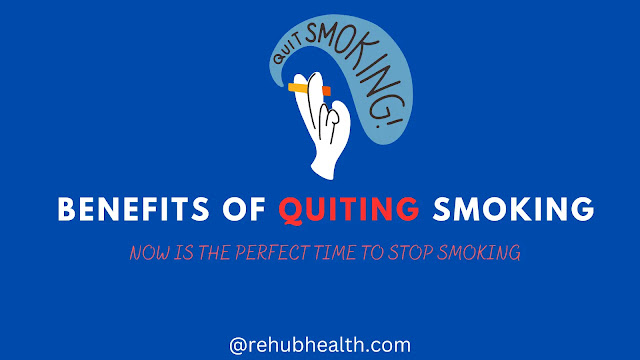High Cholesterol (Hypercholesterolemia)
Overview
When is Hypercholesterolemia considered?
Symptoms of Hypercholesterolemia
should be noted that there are no symptoms associated with high blood cholesterol, and a blood test is the only way to detect this. Still, some indicators may appear in some people that may indicate high blood cholesterol, and these indicators are as follows:
Xanthomas: It is a fatty mass that can appear anywhere in the body under the skin, especially on the elbows, joints, tendons, knees, hands, feet, buttocks, and eyelids, and they are known here as xanthelasma, and these may cause The blocks to distort the shape of the individual.
Corneal arch: a condition that does not affect vision that occurs as a result of cholesterol deposits around the cornea; It is the transparent cover in front of the eye, and this appears as a white or gray ring around the iris, which represents the colored part of the eye.
Causes and Risk Factors of hypercholesterolemia
Many causes may lead to high blood cholesterol, and they can be stated as follows:
Genetic factor: The genetic factor may play a role in the accumulation of excess cholesterol in some tissues of the body, including the tendons or under the skin of the eyelids, and familial hypercholesterolemia is the most common genetic condition.
Unhealthy lifestyle: The cause of high blood cholesterol in most cases is a diet rich in saturated fats, in addition to a lack of physical activity.
Speaking of risk factors that increase the chance of high blood cholesterol, it can be said that they include an unhealthy lifestyle of physical activity, diet, and obesity; It was found that this increases the risk of a high level of bad cholesterol and low level of good cholesterol in the blood, in addition to smoking, diabetes, high blood pressure, and a family history of stroke and heart disease.
Diagnosis of Hypercholesterolemia
The doctor can diagnose an individual as having high blood cholesterol based on several things, including a physical examination, in addition to the patient’s medical and family history, and the results of tests related to cholesterol levels in the blood, where a test called a lipid map or lipid profile are performed. tests), to diagnose high cholesterol, as this analysis measures the following:
- Total cholesterol level.
- Good cholesterol level.
- Non-high-density lipoproteins (Non-HDL) cholesterol, which includes the aforementioned LDL Cholesterol.
It should be noted that the diagnosis is made if the test result is continuously or continuously higher than the healthy level upon re-examination of the individual’s age, gender, and health status, including the presence of persistently high levels of harmful cholesterol in the blood, and additional tests can be performed to find out whether other medical conditions cause high cholesterol levels in the blood.
Treatment of Hypercholesterolemia
The level of high cholesterol can be reduced and controlled by making some lifestyle modifications as a prior step to prescribing medications, including the following:
- Maintain a healthy and balanced diet, reduce saturated fat in food, and replace it with fruits, vegetables, and whole grains.
- Exercising regularly.
- Quit Smoking.
If the advice mentioned above did not find the desired effect in reducing blood cholesterol levels and the risk of heart disease is still high; The doctor may prescribe drug treatments to lower cholesterol levels, depending on several factors, the most important of which are: the patient’s personal risk factors, age, health level, and possible side effects of the drug. Among the drug treatments that are usually chosen are the following:
Statins: include atorvastatin, fluvastatin, lovastatin, pitavastatin, pravastatin, and rosuvastatin Simvastatin, whose mechanism of action is to block the substance that the liver needs to make cholesterol, forces the liver to withdraw cholesterol from the blood. These medications may also help reverse coronary artery disease - which will be described in the damage - and prevent its infection, by reabsorption of cholesterol from the deposits accumulated on the walls of the arteries.
Bile-acid-binding resins: The liver uses cholesterol to manufacture bile acids that are important for digestion. These drugs indirectly lower cholesterol by binding to bile acids and excreting them from the body, which prompts the liver to use the cholesterol present. In the blood to manufacture more bile acids, these drugs include, Colestyramine, Colesevelam, and Colestipol.
Cholesterol absorption inhibitors: The small intestine absorbs cholesterol from food and excretes it into the blood. It can be used with statin medications.
Injectable medications: Injectable medications are a new type of medication known as PCSK9 inhibitors that help the liver absorb more LDL cholesterol, thereby lowering its level in the blood. Medicines for people with an inherited condition that causes high levels of LDL cholesterol, who have a history of coronary artery disease, or who cannot take statins or other cholesterol medications, such as Alirocumab and Evolocumab.
The Harms of Hypercholesterolemia
Over time, chronic or uncontrolled high blood cholesterol can cause serious complications, which include:
Coronary artery disease: caused by excess levels of fats including triglycerides and cholesterol; Especially, in the narrowing of the arteries that supply the heart with blood, which reduces or prevents the spread of blood and oxygen to the heart.
Peripheral artery disease: a narrowing of the peripheral arteries that supply blood to the legs, stomach, arms, and head. The most common form is stenosis of the arteries in the legs.
Carotid artery disease: It is a disease that increases the chance of having a stroke, and it occurs as a result of the accumulation of plaques inside the carotid arteries, which are located on both sides of the neck, and branch into internal and external arteries.
Stroke: A stroke occurs as a result of an interruption in blood flow to the brain, and its complications include vision and speech problems, paralysis, or death because brain cells begin to die if the blood interruption lasts for a few minutes, which leads to permanent brain damage and long-term disability. As a result of disrupting the work of the parts of the body that are controlled by brain cells.
Prevention of Hypercholesterolemia
High cholesterol can be prevented by lifestyle modifications, which may help lower cholesterol levels. These modifications include the following:
Follow a Healthy Diet: This includes reducing saturated fats and trans fats in food, by cooking with healthy oils such as vegetable oils and limiting the intake of red meat, full-fat dairy products, and fried foods. Increasing.
Physical Activity: It has been found that following a lifestyle that is low in physical activity leads to a reduction in the level of good cholesterol
Quit Smoking: Quitting smoking helps lower cholesterol levels.
Losing excess weight: Losing excess weight helps improve cholesterol levels, even if the weight loss is only as small as 10%.
Do not forget to share the article with others to raise awareness of the importance of maintaining health from diseases such as hypercholesterolemia. hypertension and Anemia...
Stay safe.
SOURCES:
- What is Hypercholesterolemia?
- Hypercholesterolemia Diagnosis
- How to treat hypercholesterolemia?
- What Symptoms Does Hypercholesterolemia Cause?






